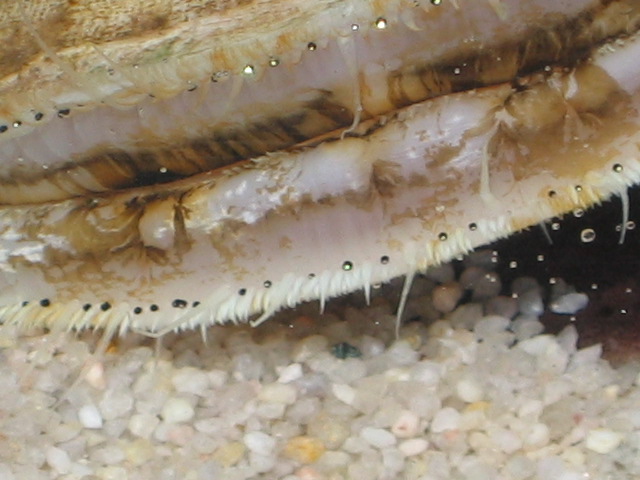Sea Scallop (Giant Scallop)

Scientific Name: Placopectin magellanicus
Phylum: Mollusca
Class: Bivalvia
Description: Bivalve shell, both shells round. Shell is held together by small, straight hinge. Lower valve is flatter, smooth and white in color. Upper valve is arched and usually reddish.
Distribution: Northwest Atlantic from the Gulf of St. Lawrence to North Carolina . In Northern ranges they occur in water shallower than 18m, while in southern ranges they are confined to water deeper than 54m. They frequently occur in beds, depending on chances of settlement and subsequent survival.
Locomotion: They can swim by contraction of powerful muscles that ‘clap’ the shells together. This forces water out from corners of the hinge, and propel sea scallop forward.
Food gathering/digestion: Filter feeders – feed on minute plants and animals that they strain from the water by an elaborate filtering mechanism involving the gills and cilia. They have a complete gut.
Gas Exchange: Filter water over the gill, exchanging gases.
Reproduction: The sexes are separated, with eggs being fertilized externally. Spawning occurs in late September-October. Larvae are free swimming for 3 weeks when they form a “foot” which produces a byssus. This is used to attach them when they settle (spat). This is lost in the adult.
Interesting Facts: Age can be determined by counting the rings on their shell. They are slow growing and long lived. The average age in areas of high exploitation is 4-5 years, while greater than 20 years in area of low exploitation. In this case, the mean is of low quality. 75% of Canadian scallop landings come from Georges Bank . This species is aquacultured in NL – Dr. Pat Dabinett of the OSC has developed a hatchery in Belleoram, Fortune Bay that provides spat to farmers.
Images
 |
 |